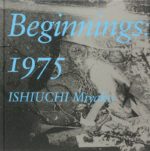Stimulée par sa relation conflictuelle avec sa ville natale, Yokosuka — site d’une importante base navale américaine depuis 1945 —, Miyako Ishiuchi choisit cette ville comme premier sujet photographique d’envergure. Granuleux, morose et profondément personnel, ces premiers projets ont établi sa carrière. Ce choix de sujet a également marqué le début de l’exploration étendue par Ishiuchi de l’occupation américaine et des ombres qu’elle a jetées sur le Japon d’après-guerre.
Ishiuchi a depuis abordé le thème de l’occupation à la fois indirectement — par ses photographies de cicatrices, de peau et d’autres marqueurs temporels sur le corps humain — et plus explicitement, avec ses images de vêtements et d’accessoires appartenant autrefois aux victimes de l’explosion atomique à Hiroshima. Les essais présentés dans ce volume révèlent le passé comme la source de l’œuvre d’Ishiuchi et le moment présent comme son sujet principal.
Ishiuchi Miyako : Postwar Shadows – qui comprend une sélection de plus de 100 œuvres – a été publié à l’occasion d’une exposition du même nom, au Musée J. Paul Getty du Getty Center, Los Angeles, du 5 octobre 2015 au 21 février 2016.
Amanda Maddox est conservatrice associée au département des photographies du musée J. Paul Getty.
« Un catalogue bien documenté avec des essais solides, une chronologie joliment illustrée et de bonnes impressions photographiques. Il est très agréable que cette photographe extraordinaire reçoive enfin l’attention qu’elle mérite. » —Journal of Japanese Studies
Spurred by her contentious relationship with her hometown, Yokosuka—site of an important American naval base since 1945—Ishiuchi chose that city as her first serious photographic subject. Grainy, moody, and deeply personal, these early projects established her career. This choice of subject also defined the beginning of Ishiuchi’s extended exploration of the American occupation and the shadows it cast over postwar Japan.
Miyako Ishiuchi has since addressed the theme of occupation both indirectly—through her photographs of scars, skin, and other markers of time on the human body—and more explicitly, with her images of garments and accessories once owned by victims of the atomic blast in Hiroshima. Essays featured in this volume reveal the past as the wellspring of Ishiuchi’s work and the present moment as her principal subject.
Ishiuchi Miyako: Postwar Shadows—which includes a selection of more than 100 works—was published on the occasion of an exhibition by the same name, on view at the J. Paul Getty Museum at the Getty Center, Los Angeles, from October 5, 2015, to February 21, 2016.
Amanda Maddox is associate curator in the Department of Photographs at the J. Paul Getty Museum.
“A well-researched catalogue with solid essays, a nicely illustrated chronology, and good photographic prints. It is very pleasing that this extraordinary photographer finally gets the attention she deserves.” —Journal of Japanese Studies














